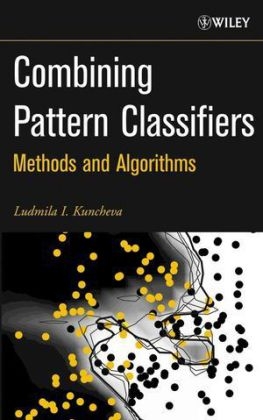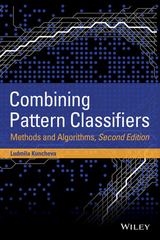
Combining Pattern Classifiers
John Wiley & Sons Inc (Verlag)
978-0-471-21078-8 (ISBN)
- Titel erscheint in neuer Auflage
- Artikel merken
Covering pattern classification methods, "Combining Classifiers: Ideas and Methods" focuses on the important and widely studied issue of how to combine several classifiers together in order to achieve improved recognition performance. It is one of the first books to provide unified, coherent, and expansive coverage of the topic and as such will be welcomed by those involved in the area. With case studies that bring the text alive and demonstrate 'real-world' applications it is destined to become essential reading.
LUDMILA I. KUNCHEVA is a Senior Lecturer in the School of Informatics at the University of Wales, Bangor, UK.
Preface.Acknowledgments.Notations and Acronyms.1. Fundamentals of Pattern Recognition.1.1 Basic Concepts: Class, Feature, Data Set.1.2 Classifier, Discriminant Functions, Classification Regions.1.3 Classification Error and Classification Accuracy.1.4 Experimental Comparison of Classifiers.1.5 Bayes Decision Theory.1.6 A Taxonomy of Classifier Design Methods.1.7 Clustering.Appendix.2. Base Classifiers.2.1 Linear and Quadratic Classifiers.2.2 Nonparametric Classifiers.2.3 The k-nearest Neighbor Rule.2.4 Tree Classifiers.2.5 Neural Networks.Appendix.3. Multiple Classifier Systems.3.1 Philosophy.3.2 Terminologies and Taxonomies.3.3 To Train or Not to Train?3.4 Remarks.4. Fusion of Label Outputs.4.1 Types of Classifier Outputs.4.2 Majority Vote.4.3 Weighted Majority Vote.4.4 "Naive"-Bayes Combination.4.5 Multinomial Methods.4.6 Probabilistic Approximation.4.7 SVD Combination.4.8 Conclusions.Appendix.5. Fusion of Continuous-Valued Outputs.5.1 How Do We Get Probability Outputs?5.2 Class-Conscious Combiners.5.3 Class-Indifferent Combiners.5.4 Where Do the Simple Combiners Come From?5.5 Appendix.6. Classifier Selection.6.1 Preliminaries.6.2 Why Classifier Selection Works.6.3 Estimating Local Competence Dynamically.6.4 Pre-estimation of the Competence Regions.6.5 Selection or Fusion?6.6 Base Classifiers and Mixture of Experts.7. Bagging and Boosting.7.1 Bagging.7.2 Boosting.7.3 Bias-Variance Decomposition.7.1 Which is Better: Bagging or Boosting?Appendix.8. Miscellanea.8.1 Feature Selection.8.2 Error Correcting Output Codes (ECOC).8.3 Combining Clustering Results.Appendix.9. Theoretical Views and Results.9.1 Equivalence of Simple Combination Rules.9.2 Added Error for the Mean Combination Rule.9.3 Added Error for the Weighted Mean Combination.9.4 Ensemble Error for Normal and Uniform Distributions.10. Diversity in Classifier Ensembles.10.1 What is Diversity?10.2 Measuring Diversity in Classifier Ensembles.10.3 Relationship Between Diversity and Accuracy.10.4 Using Diversity.10.5 Conclusions: Diversity of Diversity.Appendix A: Equivalence Between the Averaged Disagreement Measure Dav and Kohavi-Wolpert KW.Appendix B: Matlab Code for Some Overproduce and Select Algorithms.References.Index.
| Erscheint lt. Verlag | 1.7.2004 |
|---|---|
| Zusatzinfo | Illustrations |
| Verlagsort | New York |
| Sprache | englisch |
| Maße | 163 x 243 mm |
| Gewicht | 678 g |
| Einbandart | gebunden |
| Themenwelt | Technik ► Elektrotechnik / Energietechnik |
| ISBN-10 | 0-471-21078-1 / 0471210781 |
| ISBN-13 | 978-0-471-21078-8 / 9780471210788 |
| Zustand | Neuware |
| Haben Sie eine Frage zum Produkt? |
aus dem Bereich



